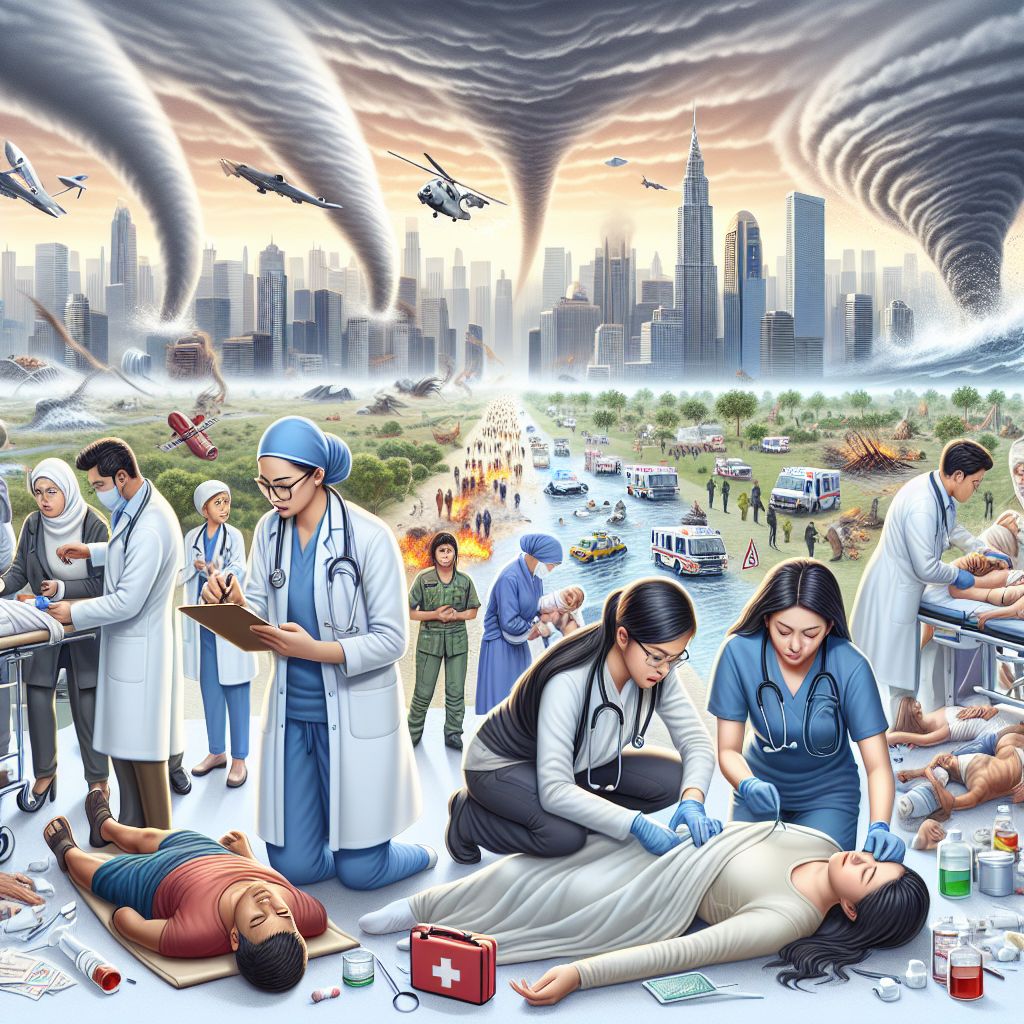Table of Contents
- Introduction
- The Direct Impact of Climate-Related Disasters on Public Health
- Indirect Health Consequences and Exacerbation of Pre-existing Conditions
- Role of Medical Staff in Disaster Management and Recovery Phases
- Challenges Faced by Medical Personnel During Climate-Related Disasters
- Conclusion: Strengthening the Role of Medical Personnel in Climate-Related Disasters
Introduction
The escalating frequency of climate-related disasters worldwide has necessitated a reevaluation of the role of medical personnel. This is not just pertinent but crucial in our contemporary society plagued by a surge of environmental catastrophes. There are three compelling reasons for this importance: First, the direct impact of such disasters on public health. Second, the indirect consequences that exacerbate existing health issues. Third, the crucial role of medical staff in disaster management and recovery phases.
• Climate-related disasters and their direct impact on public health.
• The indirect health consequences and exacerbation of pre-existing conditions due to environmental catastrophes.
The Direct Impact of Climate-Related Disasters on Public Health
Climate-related disasters such as hurricanes, floods, and heatwaves carry a direct and immediate threat to public health. These events can cause physical injuries, infectious diseases, and mental health disorders. Medical personnel are at the forefront, providing immediate medical aid to victims, conducting triage, and coordinating mass casualty management. They also play an essential role in preventive measures, such as vaccinations and public health education, to reduce the risk of disease outbreaks.
Indirect Health Consequences and Exacerbation of Pre-existing Conditions
The indirect health impacts of climate-related disasters are often overlooked yet equally devastating. These include the exacerbation of chronic conditions due to disrupted healthcare services, increased stress, and poor living conditions post-disaster. Medical personnel are instrumental in managing such issues, providing continued care for patients with chronic diseases, and ensuring the availability of necessary drugs and medical supplies. They also play a key role in mental health support, providing counselling and psychological first aid to affected individuals.
Role of Medical Staff in Disaster Management and Recovery Phases
Medical personnel’s role extends beyond immediate disaster response. They are integral to disaster preparedness, management, and recovery. Their expertise is crucial in developing disaster response plans, conducting drills, and establishing emergency medical facilities. In the recovery phase, they coordinate rehabilitation services, provide long-term care for disaster victims, and participate in post-disaster health surveillance to prevent disease outbreaks and manage public health issues.
Challenges Faced by Medical Personnel During Climate-Related Disasters
Despite their critical role, medical personnel face numerous challenges in climate-related disasters. These include resource scarcity, inadequate training, and emotional stress. They often work in harsh conditions with limited supplies and equipment. Furthermore, the emotional toll of dealing with mass casualties can lead to burnout and mental health issues. Addressing these challenges is vital to ensure the effectiveness of medical personnel in disaster response and recovery.
Conclusion: Strengthening the Role of Medical Personnel in Climate-Related Disasters
Given their pivotal role, it is imperative to strengthen the capacities of medical personnel in climate-related disasters. This could be achieved through targeted training programs, improved disaster preparedness, and mental health support for healthcare workers. Moreover, integrating climate change adaptation strategies into public health policies can further enhance their ability to respond effectively and safeguard public health during environmental catastrophes.
Adopting a proactive approach in integrating climate change adaptation strategies into public health policies is key to reducing vulnerability during environmental disasters. This necessitates a closer examination of the intersection between climate change and public health, as well as the development of comprehensive policies that address the potential impacts of climate change on human health. Such policies should not only focus on immediate responses to climate-induced health crises, but also on long-term strategies for building resilient health systems capable of withstanding future climate change impacts.
These strategies may include measures such as improving health infrastructure, investing in climate-resilient health technologies, building capacity for disease surveillance and response, and promoting public awareness on the health risks associated with climate change. The efficacy of these strategies would be significantly enhanced by strong inter-sectoral cooperation between the health sector and other sectors such as environment, meteorology, urban planning, and disaster management. This holistic approach would ensure that public health policies are robust, adaptive, and capable of protecting public health in the face of an increasingly unpredictable climate.
However, integrating climate change adaptation strategies into public health policies is not without its challenges. These may include lack of resources, inadequate technical capacity, and weak institutional frameworks for policy implementation. Therefore, it is critical that governments, international organizations, and other stakeholders invest in strengthening the capacity of the health sector to adapt to climate change. This will require not only financial resources but also the development of skills and knowledge, as well as the establishment of supportive policy and institutional frameworks.
Despite these challenges, integrating climate change adaptation strategies into public health policies represents a strategic investment in the future of public health. By proactively addressing the health impacts of climate change, we can help ensure the resilience and sustainability of our health systems, and ultimately safeguard the health and well-being of communities worldwide.
